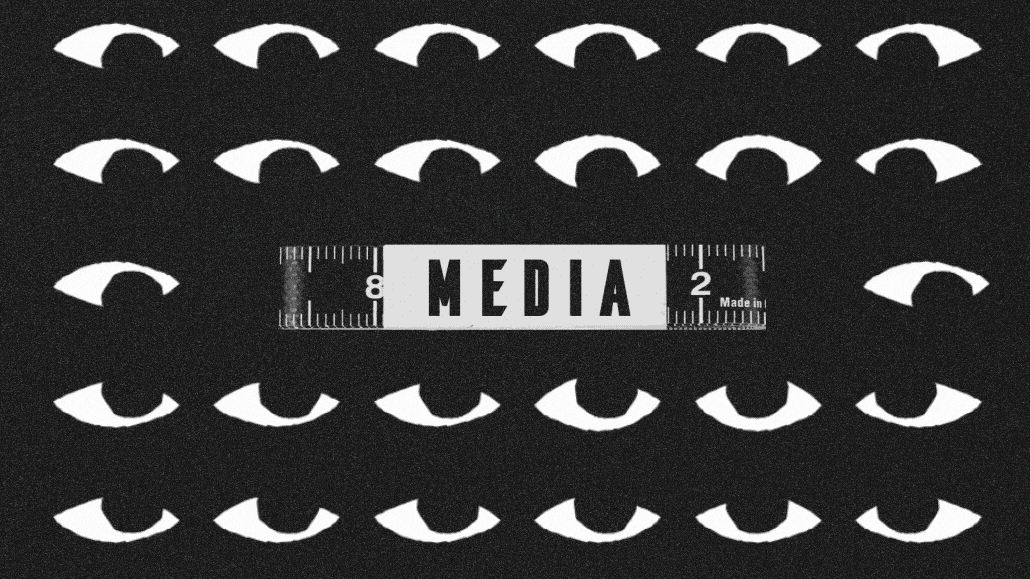Adelaide becomes the first attention metrics firm to enter the MRC accreditation process

As a Digiday+ member, you were able to access this article early through the Digiday+ Story Preview email. See other exclusives or manage your account.This article was provided as an exclusive preview for Digiday+ members, who were able to access it early. Check out the other features included with Digiday+ to help you stay ahead
The process of getting accreditation through the Media Rating Council is no walk in the park — in fact, some refer to it as a “trail of tears.” But the imprimatur of legitimacy it can confer on various forms of measurement around media and marketing can change those companies’ directions and fortunes.
Currently among the services in line for going through the accreditation process — and the only pure attention metrics firm in the chute at the moment — Adelaide is certainly hoping for that stamp of approval. And it’s recently expanded its offering to include publisher-side input that helps to round out its offering.
According to Marc Guldimann, founder and CEO of Adelaide, the seventh version of its AU attention metric, the version undergoing scrutiny from the MRC, was developed in partnership with a variety of publishers (including the New York Times Co. and The Wall Street Journal) after Adelaide rolled out a publisher product earlier this year. It’s also using outcome data from Rita, a data firm it acquired earlier this year.
“It is a very involved process — they’re [the MRC are] very, very rigorous,” said Guldimann, who hopes to have the seventh version of the AU product fully rolled out to the marketplace by Q1 2025 — it’s currently accessible to a limited number of clients. “I used to be a skeptic about MRC accreditation, but experiencing firsthand the level of rigor that goes into it has really made me more of a believer. It’s a very powerful tool that the industry has in order to drive more trust.”
Ron Pinelli, svp of digital research and standards at the MRC, confirmed that Adelaide “is in process of review in the pre-assessment phase (not yet audit) and no other attention vendor is in process at this stage.” He did note that DoubleVerify is accredited for signal-based attention while IAS is in a pre-assessment phase for the same — but both firms are in other businesses as well.
“Attention is the shiny new object in media & is measured/defined very differently depending on who you’re talking to,” said Kieran Geyer, paid media manager at Prudential Financial. “There can also be limited transparency into what exactly goes into some of those proprietary attention metrics. Not all measures of attention are created equal. MRC accreditation would go a long way in validating the value & importance of Adelaide’s AU score, especially as a means of purchasing quality, impactful inventory.”
One of the advantages Guldimann believes he has in the process — besides being the first of the pure-play attention firms to enter the MRC chute — is the fact that AU 7.0 incorporates traditional media as well as digital. However, to Prudential’s Geyer, that’s less important because most fraud occurs in the digital spectrum.
“I actually think most of Adelaide’s value is as it relates to digital media because of how much more rampant fraud is digitally,” said Geyer. “Even if advertisers are taking steps to block [invalid traffic], ensure MFA sites are blocked, etc. the remaining ‘premium’ inventory still runs across a spectrum of quality. Viewability is an imperfect metric in this respect; Adelaide and attention can begin to fill this measurement gap.”
But to Pierre Bouvard, chief insights officer at audio giant Westwood One, it means everything that AU takes into account traditional media as well as digital. “In the world of digital, they’re going to send you a bill as soon as the ad came out of the ad server — whether or not anybody ever saw it,” said Bouvard, who went through what he dubbed a “trail of tears” 20 years ago at Arbitron getting the portable people meter accredited by the MRC. “This is saying, wait a minute, let’s actually see are people like noticing this? Is it holding their attention? Are we creating memories? So I’m excited that they’re going through the rigor of the MRC.”
Of course, Bouvard is a big fan of attention since, to his point, it essentially bursts the myth that audio is of lesser value than sight and motion. “This data set says that audio is as good or better than most visual media,” Bouvard said. “That’s the first time somebody has actually quantified the fact that you can look away, but you can’t shut your ears.”
Guldimann also believes this is a step in the direction of giving greater credence to evidence-based decision-making and away from narrative-based, which simply put is the equivalent of exclusion lists without taking context into account. For example, blocking the word “bomb” across all content, when it doesn’t always have a negative connotation.
“I do see the market shifting to a more evidence based approach of decision making,” said Guldimann, “which will force more transparency around quality, because in order to make evidence-based decisions, you need to really understand quality.”
Ed McElvain, chief product officer at IPG’s Mediahub, said the agency’s been using AU for nearly five years now, and appreciates the effort to get accredited. “The rigor of MRC accreditation is important in validating and supporting our shared mission of quality and transparency in media,” said McElvain.
More in Media Buying

Media buyers shift spend from The Trade Desk’s OpenPath over transparency concerns
OpenPath offers buyers a “cleaner” route to publishers, but some are concerned about lack of clarity over indirect costs.

Why brands are still showing up on Roblox
Over the past year, Roblox has become harder for brands to ignore — not because it has resolved the challenges of digital commerce, but because of the scale at which younger consumers already use it.

Why Pinterest wants to buy tvScientific, and what it signals for the CTV ads business
Corporate development sources estimate the deal valuation to be above $300 million, claiming tvScientific’s gross revenue is approximately $100 million.








